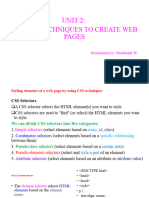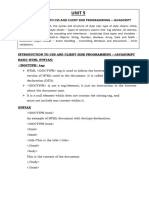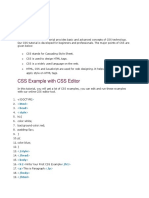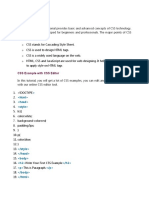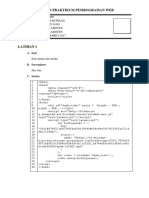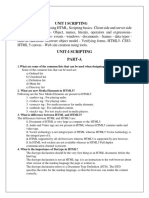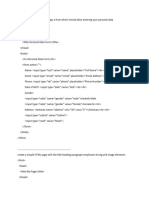0% found this document useful (0 votes)
137 views11 pagesCSS Selector
Selectors are patterns used to select elements and apply CSS styles. There are different types of selectors including universal, type, class, and ID selectors. The universal selector selects all elements, type selectors select elements by their type (e.g. h1, p), class selectors select elements with a specific class, and ID selectors select elements with a unique ID. Examples demonstrate applying styles like font colors to different elements using these selector types.
Uploaded by
Amar DhalCopyright
© © All Rights Reserved
We take content rights seriously. If you suspect this is your content, claim it here.
Available Formats
Download as PDF, TXT or read online on Scribd
0% found this document useful (0 votes)
137 views11 pagesCSS Selector
Selectors are patterns used to select elements and apply CSS styles. There are different types of selectors including universal, type, class, and ID selectors. The universal selector selects all elements, type selectors select elements by their type (e.g. h1, p), class selectors select elements with a specific class, and ID selectors select elements with a unique ID. Examples demonstrate applying styles like font colors to different elements using these selector types.
Uploaded by
Amar DhalCopyright
© © All Rights Reserved
We take content rights seriously. If you suspect this is your content, claim it here.
Available Formats
Download as PDF, TXT or read online on Scribd
/ 11

